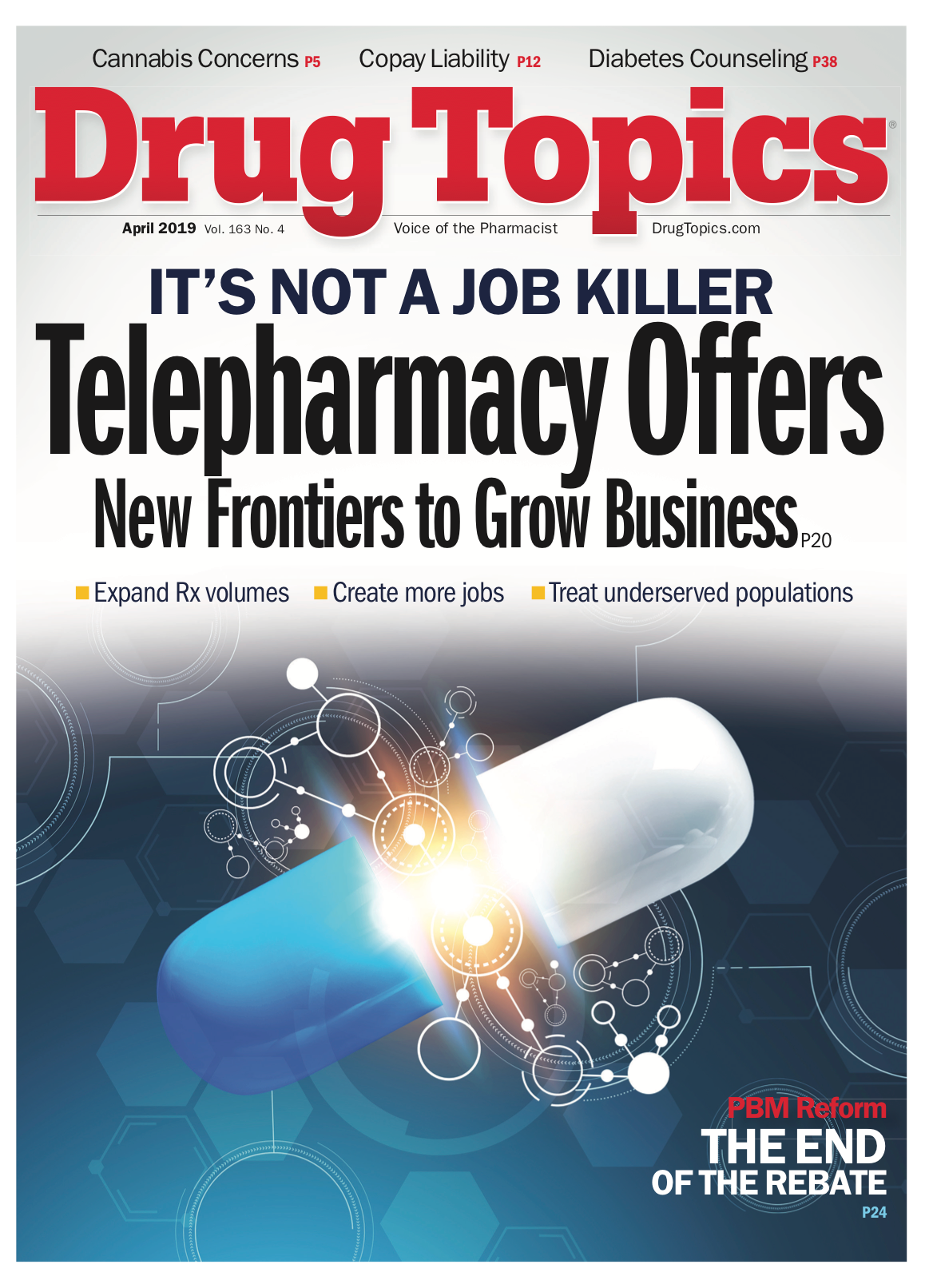APhA Conference Coverage: Provider Status Widens, Reimbursements Stall
Key updates from the Seattle, WA, conference in March.

While progress toward provider status has been relegated largely to individual states, the opioid crisis could provide a path for movement at the federal level.
All but nine states have granted some sort of provider status for pharmacists, but the scope of services permitted by this state-by-state patchwork vary widely. More restrictive provider-status states permit the administration of influenza vaccines, while some have extended prescription authority for some classes of drugs.
While the scope of approved practices is widening, challenges remain in integrating pharmacist-delivered services into the healthcare system and establishing a codified framework to work with payers, including CMS, for reimbursement of services. Currently, reimbursement is limited generally to vaccinations, MTM, and chronic care management in most states. More progressive states have created reimbursement mechanisms for Medicaid patients for broader immunizations, birth control services, and initiating and dispensing naloxone, travel medications, and nicotine replacement therapies.
Related: Lucinda Maine Recieves APhA Remington Honor Medal
While reimbursement remains a challenge, scope of services is expanding. Some states allow pharmacists to perform patient assessments and wellness visits; order and interpret drug therapy-related tests; refer to other healthcare providers; and initiate, adjust and discontinue therapy. Idaho pharmacists, for example, can prescribe medications in 20 classes after several years of expansion that now allows the Idaho State Board of Pharmacy to determine drugs or devices that pharmacists may prescribe for certain conditions.
At press time, there were 109 active pieces of legislation in statehouses around the country that will either establish or expand provider status roles for pharmacists.
Lobbyists and industry advocates have been forced to make some hard choices during the last several years, the most consequential of which has been sacrificing direct reimbursement in order to establish new services for the profession.
In most current systems, pharmacists are not eligible to receive direct payment from Medicare, Medicaid, or other government payers, but they can partner with provider networks, employers, or with private insurers to provide care for a set population. If pharmacists are going to be part of a healthcare team, then they need to join a team that is eligible to get paid. This clearly puts the responsibility of reimbursement squarely on pharmacists if they want to monetize the services they provide, and the one-off contract strategy is not ideal nor very likely to become widespread.
The Next Step to Reimbursement
However, expanded scope of services is widely considered a stepping stone to direct reimbursement. At the federal level, the Patient Access to Pharmacists’ Care Coalition is working to authorize reimbursement under Medicare Part B in medically underserved communities, which would reimburse pharmacists for approved services at 85% of the physician fee-for-service rate, similar to nurse practitioners and physician assistants.
A version of the bill was first introduced in 2014 and was reintroduced in 2017 Advocates are discussing a path forward under the new leadership, according to Ann Burns, RPh, vice president of professional affairs for APhA.
“We’ve had good bipartisan support of the bills that we have in Congress, but unfortunately they have not moved to legislation,” Burns says. “However, there is a lot of movement and interest in the opioid crisis, so that could be the pathway for a national framework.”
As opioid use disorder continues to permeate the current political environment and public health debate, there is significant political will at the state and federal level to offer more access to care and interventions.
Drug overdose is the leading cause of death for persons under the age of 50, and prescription opioids are responsible for 40% of opioid overdoses, or about 46 per day. More than 51,000 people died of drug overdoses in the United States in 2015, according to the World Health Organization. England and Wales ranked No. 2 with 3,323 deaths. More than 70,000 drug overdoses occurred in 2017, and a whopping 47,600 were opioid related, outpacing suicides (47,173) and traffic accidents (40,100) for the first time.
“This is a uniquely American problem, and this is important to understand for society if we are going to make a difference because it really says something about our culture,” says Ron Friedman, an attorney who represents pharmaceutical firms and personnel in compliance matters. He discussed office-based addition treatment options.
Read More: FDA Approves Evenity for Osteoporosis
Fatalities continue to grow, and while prescription overdoses ebbed for the first time in 2017, prescriptions still contributed to more than 17,000 overdose fatalities.
In the current political climate and crisis surrounding the opioid use disorder could motivate legislators to authorize pharmacist intervention programs that would qualify for reimbursement.
PPSI Highlights Public Health
Pharmacists Planning Services Inc. and the American College of Apothecaries Foundation highlighted public health initiatives that expand the scope of practice for pharmacists during its annual breakfast at APhA.
Ryan Oftebro, PharmD, FACA, CEO of Kelley-Ross Pharmacy Group in Seattle, has embraced Washington’s expansive provider status authority to provide his community with access to two critical public health therapies: naloxone and PreP, pre-exposure prophylaxis that uses a combination of HIV medicines tenofovir and emtricitabine (Truvada).
“We are the most accessible healthcare provider, and that gives us the opportunity to participate in important public health campaigns,” he said while discussing his Take Home Naloxone program. “Anyone who is at risk of witnessing an overdose-which is essentially everyone-can carry a kit, with some quick training and no questions asked.”
Pharmacist-prescribed birth control is another service greenlighted in a handful of states. In California, Sally Rafie, PharmD, BCPS, assistant clinical professor at UC San Diego Health, is working with 1,100 pharmacies to conduct screening and deploy better education and access to birth control options.
While pharmacist-driven public health initiatives are becoming more widespread, payment remains a challenge. California, known for its favorable provider status authority, is still looking for ways to pay those 1,100 pharmacies for their services.
